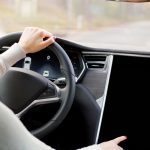Passengers in Austin are now able to hail completely driverless Tesla Model Y vehicles through a dedicated Robotaxi service, marking a notable step for the ride-hailing industry and self-driving technology. With access limited to a select group and operating in a geofenced area for now, the service’s launch has sparked discussions about safety, revenue potential, and ride-hailing innovation. As cities look for alternative mobility solutions, Tesla’s latest move invites close attention from both technology advocates and skeptics. Early reactions from users have highlighted the unique experience of riding in a vehicle with no driver, a milestone previously only witnessed in pilot programs by other autonomous vehicle companies.
While other companies such as Waymo and Cruise have offered driverless rides in selected regions, Tesla’s approach employs a widely available production vehicle, the Model Y, and integrates the system directly into its existing consumer app on iOS. Earlier reports focused on regulatory hurdles and technical limitations, whereas this latest service sees Tesla taking a controlled but public-facing route. Unlike some previous pilot projects that relied on heavily modified vehicles or restricted groups, this deployment features integration with personal media profiles and a fixed introductory fare, differentiating Tesla’s offering from its competitors.
How Does Tesla’s Robotaxi Service Work in Austin?
Only individuals included in Tesla’s Early Access group can currently use the driverless Robotaxi platform within a specific segment of South Austin. Rides cover a roughly thirty-minute route from end to end in the designated zone, with passenger access limited to the rear seats of a Model Y. Tesla has implemented a fixed fare of $4.20 for each ride regardless of distance or time, a pricing strategy set to change with broader rollout. A safety monitor sits in the passenger seat, but has no physical vehicle controls; rather, the fully autonomous system is responsible for all driving maneuvers.
What Measures Are in Place to Ensure Safety?
Tesla designed the service rollout with safety as a primary consideration. The safety monitor’s role is limited to observation, providing reassurance during the initial deployment phase and ensuring protocol adherence if technical issues arise. Model Y vehicles used for the service are equipped with Tesla’s latest autonomous driving software, offering real-time media and profile syncing for passengers. All rides are logged and monitored, and response plans are in place should the vehicle encounter unexpected situations.
What Revenue Opportunities Does Tesla Expect from Robotaxi?
The Robotaxi platform introduces a potential new source of recurring revenue for Tesla. As the company’s growth forecasts and valuation have faced scrutiny, this expansion into ride-sharing reflects broader ambitions to leverage autonomous technology beyond direct vehicle sales. Industry analysts, including Cathie Wood and Dan Ives, have pointed to autonomous robotaxi fleets as a potential catalyst for substantial income, with expectations that larger-scale deployment could eventually drive significant value. Tesla’s integration of the ride-hailing function within its existing app signals a commitment to rapid scaling if regulatory and technical milestones are met.
Tesla’s Robotaxi service introduction arrives at a time when autonomous vehicles continue to face scrutiny over operational safety and regulatory compliance. Unlike earlier Robotaxi launches by other companies, Tesla’s rollout integrates consumer-facing features such as personalized ride experiences and a standardized mobile application interface. As initial public rides commence in Austin, Tesla’s strategy focuses on an incremental rollout, offering insight into the company’s ability to navigate real-world complexities posed by autonomous mobility. The fixed fare is likely to attract early users while preparing the system for future adjustments based on usage trends, demand, and legal environments.
For readers monitoring urban mobility trends, Tesla’s move reinforces the continued significance of autonomous technology in shaping transportation options. Key takeaways for consumers and city planners include the importance of safety oversight during pilot phases, the value of integrating personalized digital experiences within public ride services, and the potential economic impact should driverless fleets become a wider reality. While questions remain regarding regulation and scalability, the Austin rollout provides a benchmark for evaluating future developments in autonomous mobility services.










